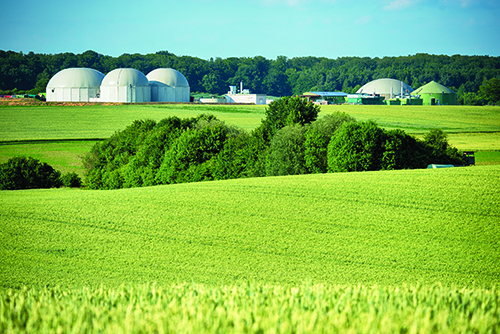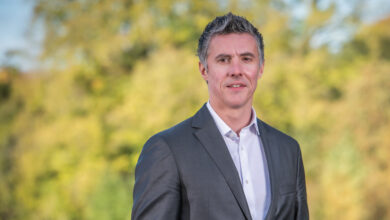Energising the food & agribusiness sector
Cox’s Food & Agribusiness Group, explains why technological advances will be vital to the future of Ireland’s food & agribusiness sector.
Energy is a major overhead in the food and agribusiness sector. The Irish dairy sector has prioritised energy procurement (forecasting, managing and generating energy) for many years. Technological advances, reduced supply chain costs and binding international policies are increasingly aligned to justify increased participation by Irish agribusiness in all aspects of the sustainable and low carbon energy supply chain. This is most evident in on-site or “embedded” power production in new sectors including distilleries and smaller food production facilities.
The scale of the required investment of capital and management time involved in developing sustainable and on-site energy solutions is considerable but the pay-back period is now seen in the sector as increasingly justifiable.
In addition to optimising the business overhead, in-house energy proficiency can support brand enhancement and create additional revenue through capturing and exploiting excess heat or selling surplus energy to other users.
Here, Arthur Cox’s Food & Agribusiness Group examines recent international and domestic policy changes in this area and highlights drivers in energy reduction, efficiency and management opportunities.
International policy
In December 2015, the 21st Conference of Parties to the United Nations Framework Convention on Climate Change took place in Paris (COP21). It resulted in the adoption of the first universal, legally binding global climate agreement with over 200 sovereign states committing to work towards a target of holding the increase in the global average temperature to 2°C, and to pursue efforts to limit temperature increase to 1.5°C.
Whereas the scale of the political achievement in COP21 is impressive, the practical implementation of COP21 will require significant responses and commitments from the Irish and other governments. The Irish agribusiness sector will likely be driven into being at the forefront of implementing COP21, and it is reasonable to believe that wider or more rapid adoption of energy efficiency and sustainability practices will be an immediate incentive for companies.
EU policy
Irish agribusiness is and will remain keenly aware of the scope and application of European Union energy and climate change policies. By 2030, the EU has pledged to achieve at least a 40 per cent reduction in greenhouse gas (GHG) emissions compared to 1990 levels, and Ireland’s target will be a part of this pledge. This 40 per cent reduction is to be achieved collectively by EU Member States. It will involve reductions in the  emissions trading scheme (ETS) to 43 per cent and in the non-ETS to 30 per cent by 2030, respectively, compared to 2005 levels.
emissions trading scheme (ETS) to 43 per cent and in the non-ETS to 30 per cent by 2030, respectively, compared to 2005 levels.
 Although agriculture is currently in the non-ETS sector, the EU Commission is considering the possibility of agriculture and landuse (forestry) emissions being treated as an entirely separate standalone category of emissions, which would have to meet its own special targets. If this proposal is not accepted, there will be serious implications for the sector as agriculture emissions measured over 32 per cent of the non-ETS emissions in 2013. This compares with an EU average of 10 per cent. The findings of the EU Commission’s recent consultation in respect of this proposal, which ended in June 2015, are awaited.
Although agriculture is currently in the non-ETS sector, the EU Commission is considering the possibility of agriculture and landuse (forestry) emissions being treated as an entirely separate standalone category of emissions, which would have to meet its own special targets. If this proposal is not accepted, there will be serious implications for the sector as agriculture emissions measured over 32 per cent of the non-ETS emissions in 2013. This compares with an EU average of 10 per cent. The findings of the EU Commission’s recent consultation in respect of this proposal, which ended in June 2015, are awaited.
Irish Policy: the 2015 White Paper
At a national level, in December 2015, the Irish Government published a white paper on ‘Ireland’s Transition to a Low Carbon Energy Future 2015 – 2030’. The white paper sets out Ireland’s energy policy framework until 2030 and its stated objective is to guide a transition to a low carbon energy system. It notes the Paris Agreement and the agreed target of restricting the global average temperature increase to less than 2°C and sets out Ireland’s three 2020 climate change targets under the EU’s growth strategy: (1) a GHG reduction target (in the non-ETS sector); (2) a renewable energy target; and (3) an energy efficiency target.
Industry opportunities
With particular reference to the recent Paris Agreement, the White Paper and the now-critical mass of the Irish renewables sector, participants in the food & agribusiness sector will be incentivised to maximise energy savings and consumption through combined heat and power (CHP) plants, biomass and other low carbon energy sources, such as natural gas. Opportunities for increased targeted deployment of rooftop solar and onshore wind generation are already established.
Cutting out waste and inefficient practices is a standard aspiration that applies regardless of a low-carbon policy environment. Waste, or apparently low value by-products, have a value and there are many opportunities for “embedded” CHP generation (i.e. on site energy production) from various sources including landfill biogas and domestic and internationally sourced biomass (forestry).
Particular examples include, Dairygold which has operated CHP plants at Mitchelstown and Mallow in County Cork for many years using power and heat in its operations. More recently, Arthur Cox acted for the funders to the Mayo Renewable Power 42.4MW facility at Killalla in County Mayo; with the project using international and local biomass and using heat to dry and manufacture wood pellets for onward-sale within Ireland to other CHP plants. Another example is the use by certain chicken farmers of the waste produced from chicken houses to generate heat for use in production.
As far back as 2008, the Environmental Protection Agency approved the use of chicken litter as a fuel which can be used in the chicken-production process, in the cement industry or fed into the national electricity grid. Equally, the use of mushroom compost has been approved for use as a fuel in on-site production. It is probable that many other biomass products can also be used as fuels.
Biomass could make a more significant short term contribution to meeting Ireland’s targets for renewable energy and GHG emissions reductions. The White Paper acknowledges that the benefits of biomass are greatest when local biomass resources are used, such as the use of local forests. However, bioenergy has its challenges, like the availability of sufficient sustainably-sourced biomass, competition with other land uses such as food production, and the cost of support. The White Paper states that work has already commenced on introducing a Renewable Heat Incentive (RHI) which is aimed at the non-ETS sector. It is intended that the RHI will be in place in 2016 subject to EU state aid clearance and further Government approval.
Solar power (including rooftop solar power) is set to become a larger part of the potential energy saving options, with the first planning approval for a solar energy park having been granted by An Bord Pleanála in September 2015. Also, for water sustainability, there is the potential to derive renewable energy from wastewaters and to recycle and reuse process and non-process waters.
In order to further energise the sector, participants looking to “go green” in 2016 should consider how best to turn what might previously have been considered “waste” products into energy resources and closely monitor the progress of the pending RHI.
For further information please speak to your usual Arthur Cox contact
or contact any member of our
Food & Agribusiness Group
Arthur Cox
Tel. +353 0 (1) 618 0000
Fax: + 353 0 (1) 618 0618
Email: foodandagribusinessgroup@arthurcox.com






